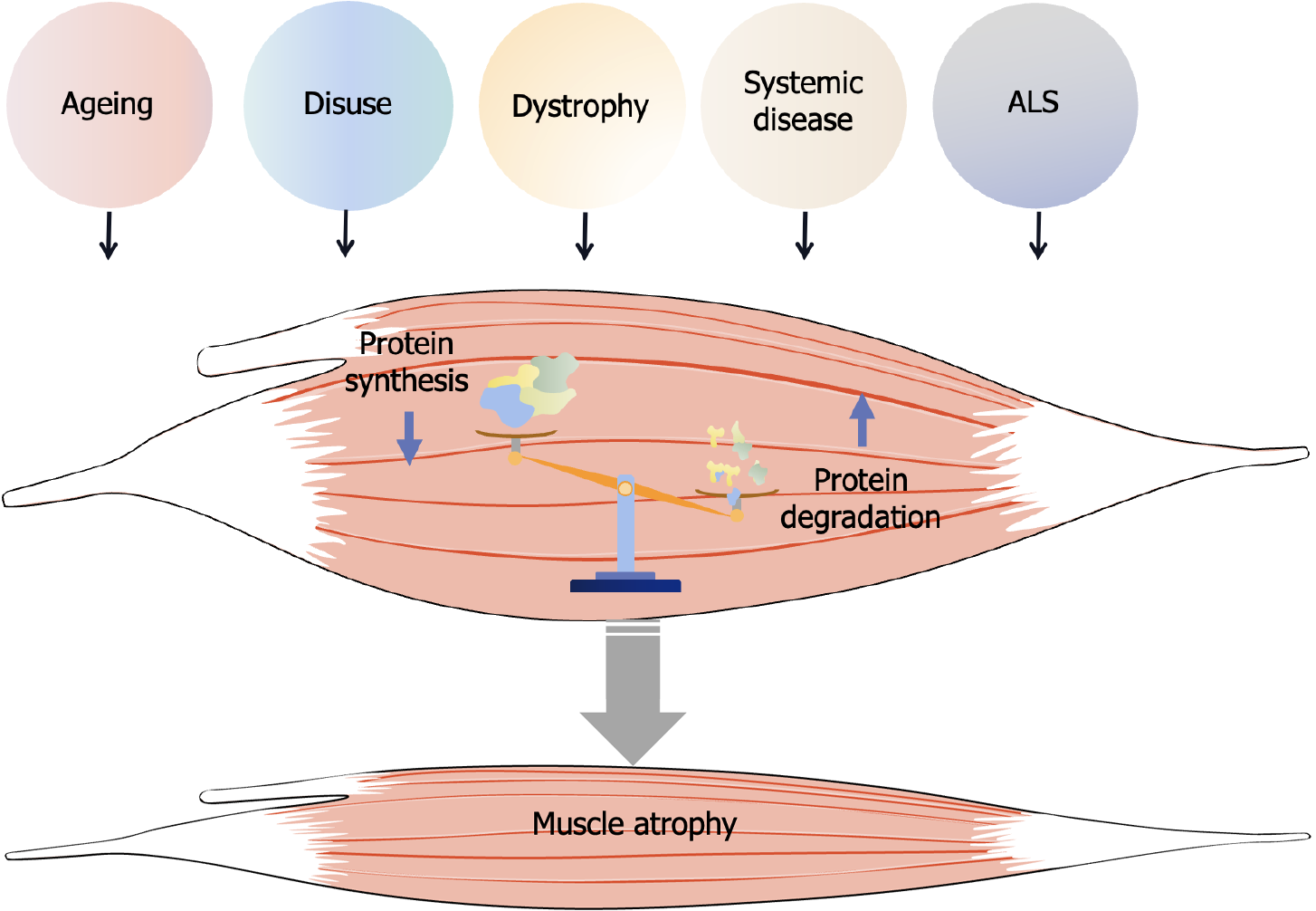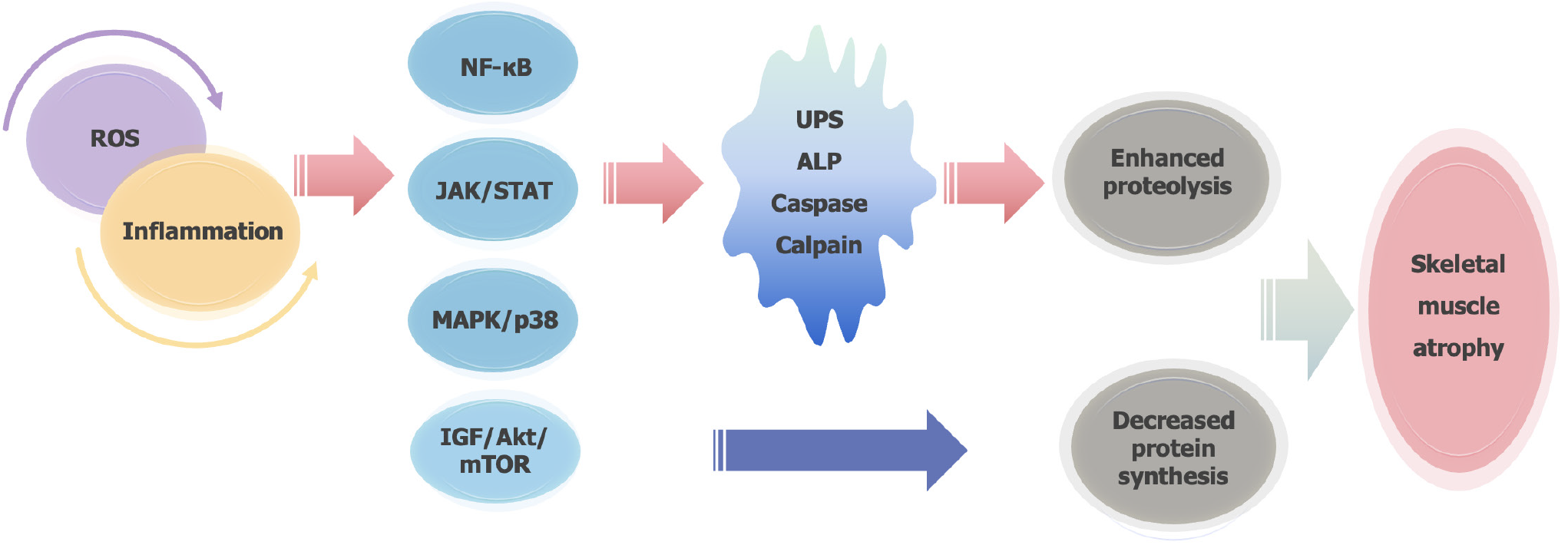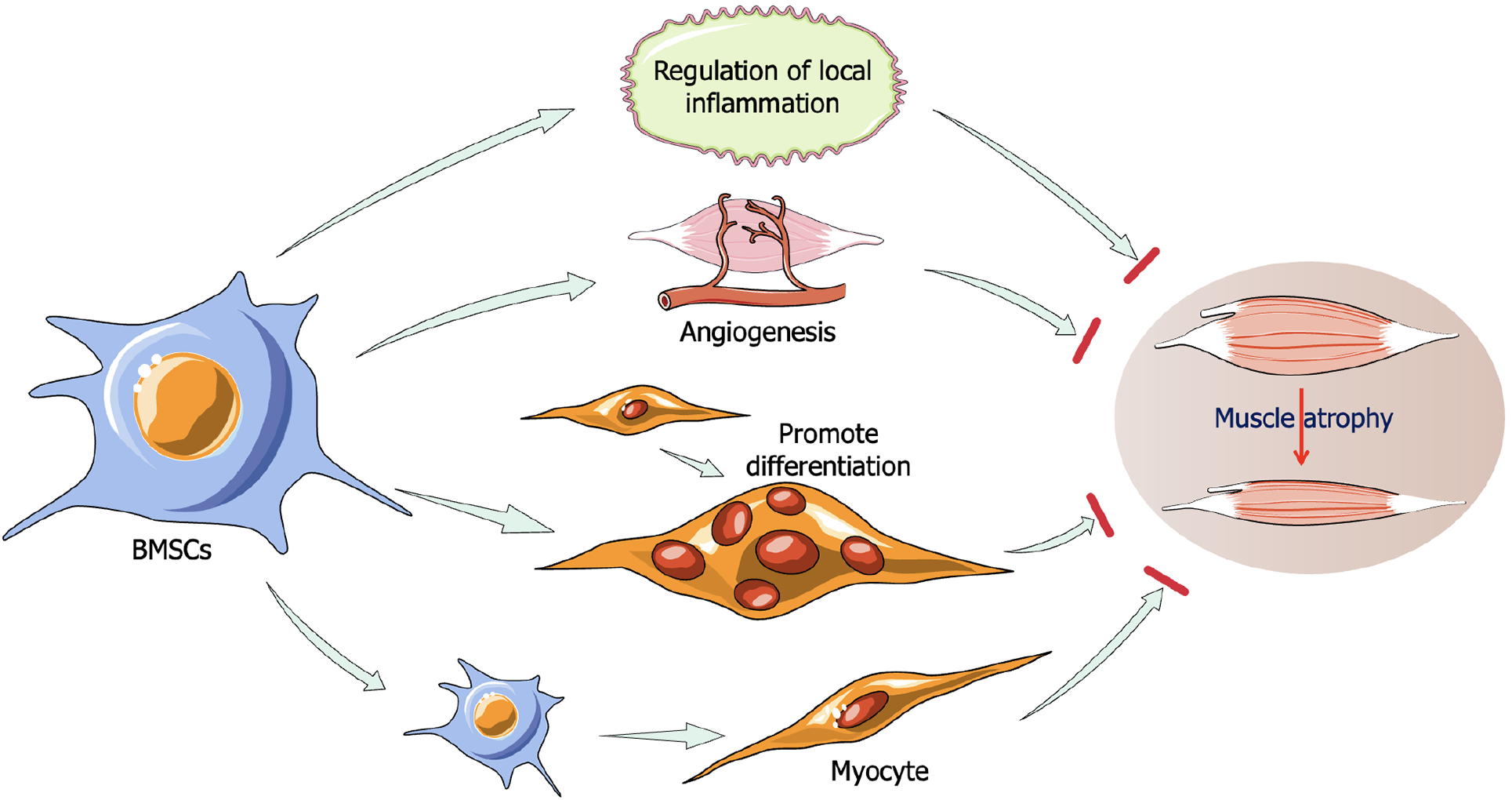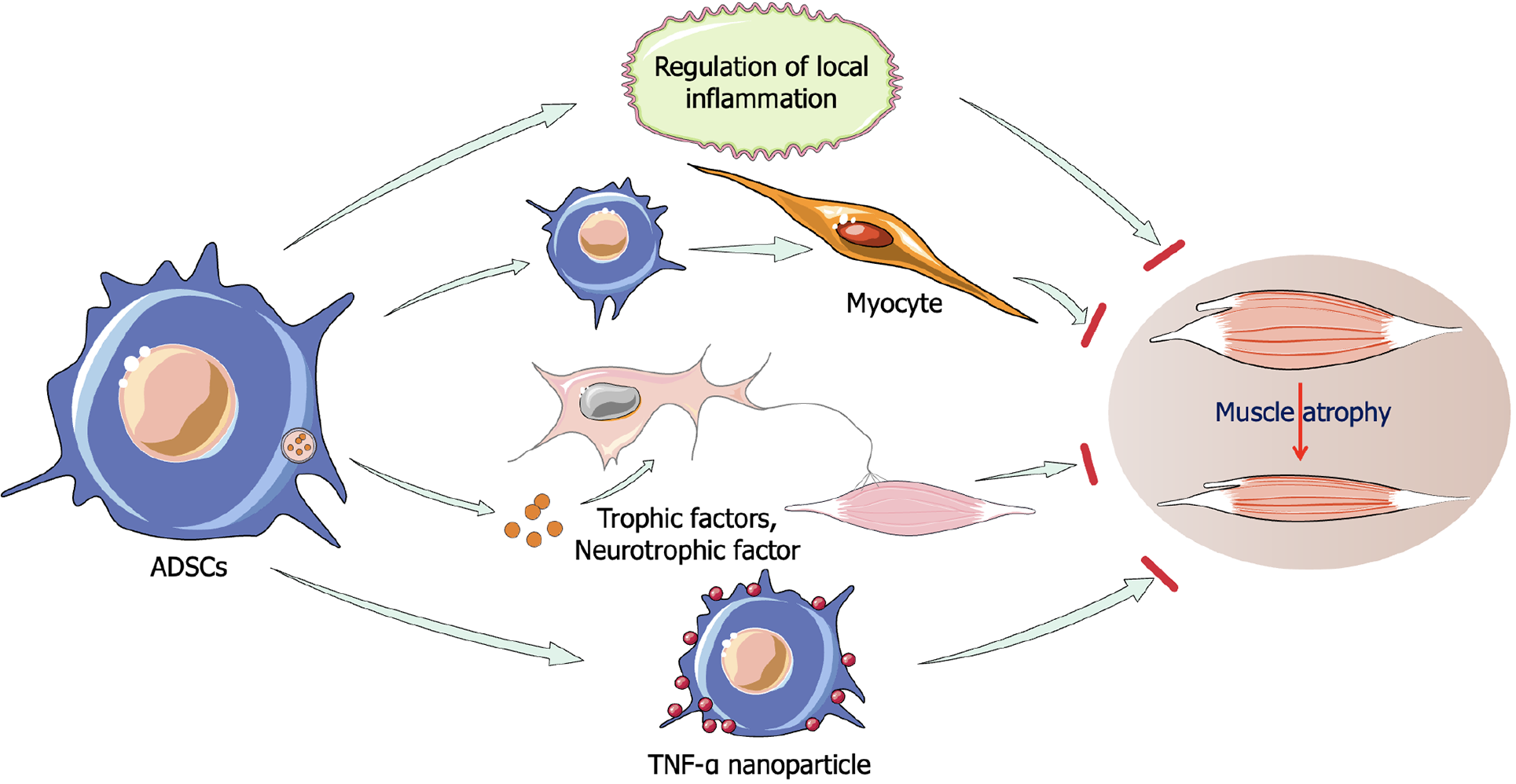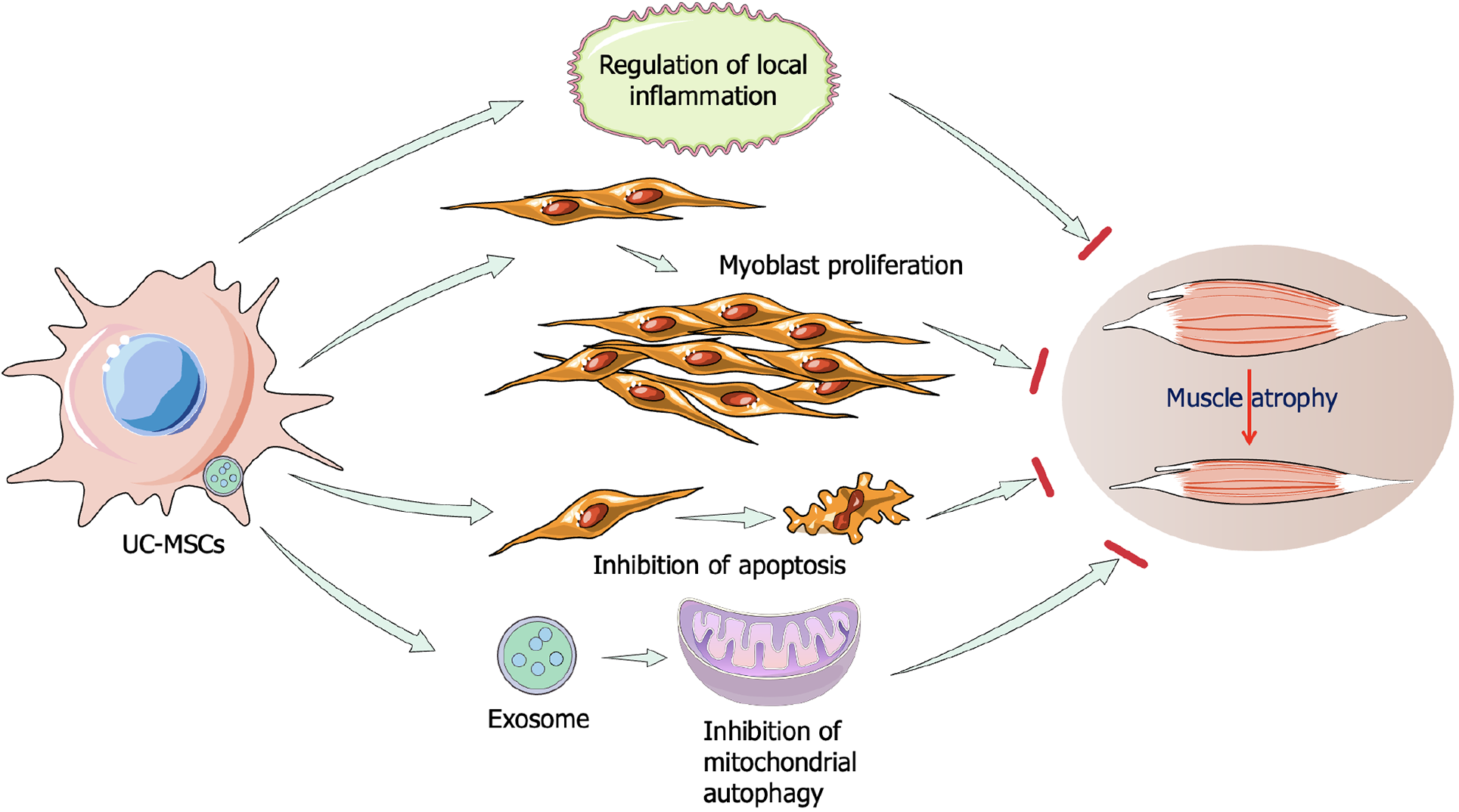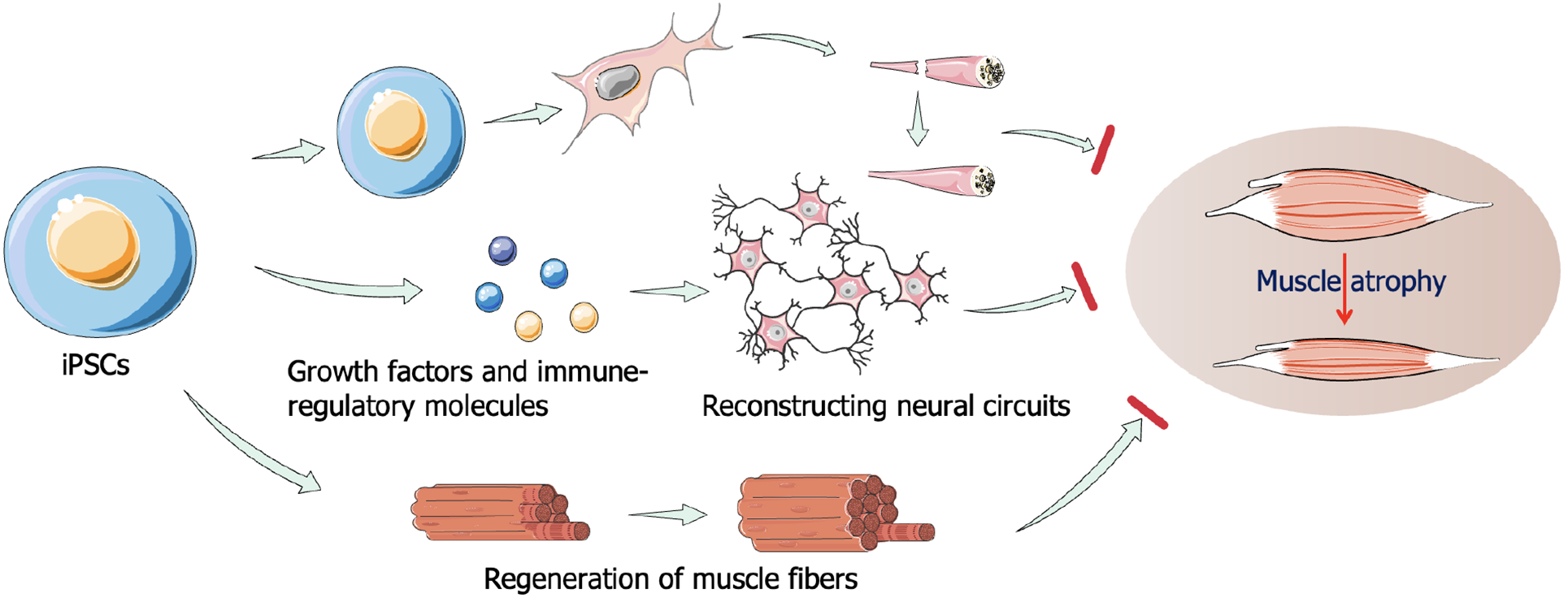Copyright
©The Author(s) 2025.
World J Stem Cells. Feb 26, 2025; 17(2): 98693
Published online Feb 26, 2025. doi: 10.4252/wjsc.v17.i2.98693
Published online Feb 26, 2025. doi: 10.4252/wjsc.v17.i2.98693
Figure 1 Different causes of muscular atrophy.
ALS: Amyotrophic lateral sclerosis.
Figure 2 The mechanism underlying muscle atrophy.
ROS: Reactive oxygen species; NF-κB: Nuclear factor-κB; JAK: Janus kinase; STAT: Signal transducer and activator of transcription; MAPK: Mitogen activated protein kinase; IGF: Insulin-like growth factor; Akt: Protein kinase B; mTOR: Mechanistic target of rapamycin; UPS: Ubiquitin-proteasome system; ALP: Autophagy-lysosome pathway.
Figure 3 The potential role of bone marrow mesenchymal stem cells for the treatment of skeletal muscle atrophy.
BMSCs: Bone marrow mesenchymal stem cells.
Figure 4 The potential role of adipose-derived stem cells for the treatment of skeletal muscle atrophy.
ADSCs: Adipose-derived stem cells; TNF: Tumor necrosis factor.
Figure 5 The potential role of umbilical cord-derived mesenchymal stromal cells for the treatment of skeletal muscle atrophy.
UC-MSCs: Umbilical cord-derived mesenchymal stromal cells.
Figure 6 The potential role of induced pluripotent stem cells for the treatment of skeletal muscle atrophy.
iPSCs: Induced pluripotent stem cells.
- Citation: Wang YJ, Chen ZH, Shen YT, Wang KX, Han YM, Zhang C, Yang XM, Chen BQ. Stem cell therapy: A promising therapeutic approach for skeletal muscle atrophy. World J Stem Cells 2025; 17(2): 98693
- URL: https://www.wjgnet.com/1948-0210/full/v17/i2/98693.htm
- DOI: https://dx.doi.org/10.4252/wjsc.v17.i2.98693









